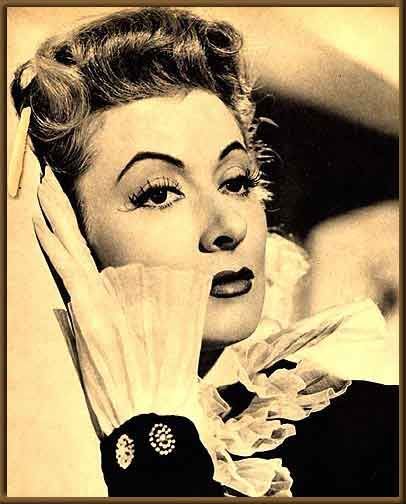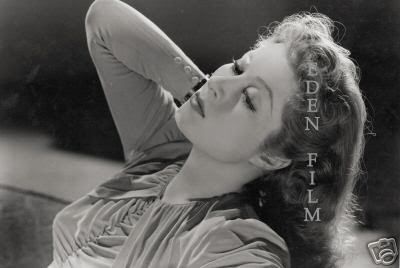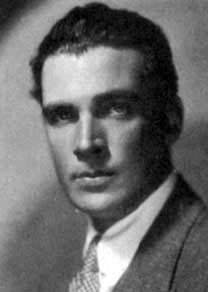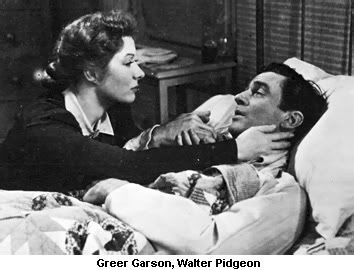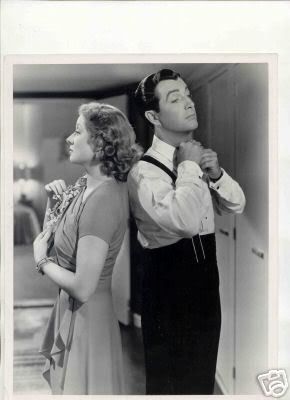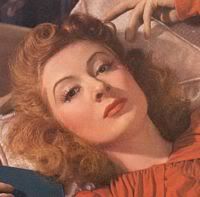Post by butterscotchgreer on Jun 30, 2007 13:45:56 GMT -5
Date of Birth
5 August 1911, Filley, Nebraska, USA
Date of Death
8 June 1969, Santa Monica, California, USA. (lung cancer)
Birth Name
Spangler Arlington Brugh
Nickname
"The Man with the Perfect Profile"
Arly
Bob
The New King
Height
5' 11½" (1.82 m)
Mini Biography
Spangler Arlington Brugh--for such was the impressive name with which Robert Taylor was born--was already displaying a diversity of talents in his youth on the plains of Nebraska. At Beatrice High School he was a standout track athlete, but also showed a talent for using his voice, winning several oratory awards. He was a musician and played the cello in the school orchestra. After graduating he thought of music as a vocation and started studying music at Doane College in Crete, Nebraska, but he was lured westward in the early 1930s - not to Hollywood, as might be thought, but to study medicine at Pomona College. This was not unusual, either, for his remarkable father was a doctor, and had in fact chosen that career for the express purpose of curing his wife of childhood invalidism. Prophetically, it was at Pomona (from which he graduated in 1933) that young Taylor also joined the campus theater group and found himself in many lead roles because of his decidedly handsome features.
He was inspired to go on to the Neely Dixon Dramatic School, but about a year after graduating from Pomona, he was spotted by an MGM talent scout and given a contract in 1934. That same year he appeared in his first movie, on loan-out to Fox for a Will Rogers entry, Handy Andy (1934). He also did an MGM short, Buried Loot (1935) for its "Crime Does Not Pay" series that provided good exposure. However, the next year he did even better by being cast as the lead--again on loan out, this time to then-struggling Universal Pictures--in Magnificent Obsession (1935) with Irene Dunne. The story of a happy-go-lucky party guy who inadvertently causes blindness to the young lady he wishes to impress and then becomes a doctor to cure her, the film was particularly symbolic to Taylor because of his own parents' relationship. The movie was a big hit, and Taylor had a taste of instant box-office stardom (it's also interesting to note his film resume only contains a single uncredited role, indicative of MGM's early awareness of his star potential). The public was not wrong, either; besides his smashing good looks, Taylor already showed solid dramatic skill. However, as was often the case with actors who were considered "too good-looking", critics took a biased view of him as a no-talent flash-in-the-pan (a charge levied at his closest contemporary comparison, Tyrone Power over at Fox). He had to endure some brutal and often unfair reviews through his first years in Hollywood, but he was too professional - already praised as a cooperative and dedicated actor - and too busy to pay attention to such sniping, which would soon fade away. In 1935 alone he appeared in seven films, and by the end of the year he was at the top of his form as a leading man and being offered substantial scripts. The next year he appeared with Greta Garbo in Camille (1936), and for the remainder of the decade MGM's vehicles for him - not to mention a pantheon of top actresses - clicked with audiences. On a personal level, despite his impressive family background and education, Taylor would often strike those who met him as a mental lightweight--- intellectually-inclined actress Luise Rainer was shocked when she struck up a conversation with him at a studio function in 1937, when, after asking him what his goals were, he sincerely replied that his most important goal was to accumulate "a wardrobe of ten fine custom-tailored suits." That he usually comes across on screen as having a confident, commanding presence is more of a testimony to his acting talent than his actual personality. He held rigid beliefs that he refused to question and when confronted with an opposing viewpoint, would simply reject it outright. He rarely, if ever, felt the need to be introspective. Taylor felt blessed to be working behind the walls of MGM, then the premier studio on earth. His affection for the studio would blind him to the fact that boss Louis B. Mayer masterfully manipulated him for nearly two decades, keeping Taylor's salary the lowest of any major Hollywood star. But this is also indicative of how much trust he placed at the hands of the studio's leaders. Indeed, Taylor remained the erstwhile MGM company man and would be rewarded by remaining employed there until the demise of the studio system in the late 1950's, outlasting it's legend, Clark Gable. Though not quite considered treasures to be locked away in film vaults, Taylor's films during the first five years of his career gave him the opportunity to explore a whole spectrum of romantic characters, playing young officers or doctors more than once. Some noticeable examples of the variety of roles he took over a year's time were his chip-on-the-shoulder Lee Sheridan in A Yank at Oxford (1938), ladies' man/boxer Tommy McCoy in The Crowd Roars (1938) and cynical southern gentleman Blake Cantrell in Stand Up and Fight (1939). Taylor would truly become a first-rate actor in the following decade. By the 1940s he was playing edgier and somewhat darker characters, such as the title roles in Billy the Kid (1941) and smooth criminal Johnny Eager (1942).
With the arrival of the war, Taylor was quick to make his contribution to the effort. As an actor, he made two memorable combat movies: Stand by for Action (1942) and the better known (and, for the time, quite graphic) Bataan (1943). From 1943-46 he was in the US Naval Air Corps as a lieutenant, instructing would-be pilots. He also found time to direct two flight instruction training films (1943) and other training films for the Navy. Rather didactic in his ultra-conservative political beliefs, he became involved as a "friendly witness" for the House Un-American Activities Committee investigating "Communist subversion" in the film industry. Anyone who knew Taylor knew he was an arch conservative, but would doubt if he could articulate why--- at least without a script. He stated that his accepting a role in Song of Russia (1944) was bad judgment (in reality it was against his nature to balk at any film assignment while at MGM) and that he considered the film "pro-Communist." He also--rather unwittingly, but still unforgivably--fingered fellow actor Howard Da Silva as a disruptive source in SAG. Although he didn't explicitly accuse Da Silva of being a Communist, his charges of "disruption" had the same effect, and the veteran actor found himself blacklisted by the studios for many years.
After the war and through the remainder of the decade, Taylor was getting action roles to match his healthy box office draw, but there were fewer of them being offered. He was aging, and though he had one of his best known roles as the faith-challenged Gen. Marcus Vinicius in Quo Vadis (1951), he was now being seen more as a mature lead (significantly, he would divorce Barbara Stanwyck and Louis B. Mayer would be ousted during production). Still, he had his dashing good looks--but also a few extra "laugh lines". MGM, post-Mayer, made a decisive move to move a significant amount of production to England as a cost-cutting move and opted to film several big-budget costume epics there starring Taylor. With Sir Walter Scott's Ivanhoe (1952) he was back (as once before in 1949) with the dazzling young Elizabeth Taylor, pining for him as the exotic Jewess, Rebecca, effectively pulling off a role ideally suited for an actor a decade younger. With a great script and lots of action (forget about the mismatch of some matte backdrops!), the movie was a smash hit. He had a new look--rakish goatee and longer hair--that fit the youthful illusion. The movie did so well that MGM opted for a sequel--for want of a better word--centering on the King Arthur legend, Knights of the Round Table (1953). It was not quite as good, but Taylor had the same look-- and it worked. To his credit, Taylor continued to push for challenging roles in his dramatic output--the old "pretty face" stigma still seemed to drive him. He played an intriguing and most unlikely character in Devil's Doorway (1950)--an American Indian (dark-stained skin with blue eyes!) who won a Medal of Honor for heroism in the Civil War and comes home to his considerable land holdings but still encounters the continued racial bigotry and envy of his white neighbors. It contained pushing-the-envelope dialog with many thought-provoking scenes dealing with the social plight of the Indian. Taylor did several noteworthy pictures after this film: the edgy Rogue Cop (1954) and was even more swashbuckling in one of the lesser known of Sir Walter Scott's romantic novels--and again successful in a younger man role-- Quentin Durward (1955). Though his contract with MGM expired in 1958, he accepted a few more films into the 1960s. He put on some weight in his 50's and the effects of chain smoking began to effect his looks, but Taylor successfully alternated between starring film roles and television, albeit at a somewhat reduced pace. He founded his own Robert Taylor Productions in 1958 and moved comfortably into TV work. From 1959 to 1962 he was the star of TV series "The Detectives Starring Robert Taylor" (1959), and when good friend Ronald Reagan bowed out (politics here he comes) of TV's popular western anthology "Death Valley Days" (1952), Taylor took over as host and sometime actor (1966-68), until his death from lung cancer at only age 57. Jane Ellen Wayne wrote a biography "Robert Taylor: The Man with the Perfect Face." No doubt he would have cringed at that title.
IMDb Mini Biography By: William McPeak (qv's & corrections by A. Nonymous)
Spouse
Ursula Thiess (24 May 1954 - 8 June 1969) (his death) 2 children
Barbara Stanwyck (13 May 1939 - 21 February 1951) (divorced)
Trivia
Directed 17 United States Navy training films during World War II.
Interred at Forest Lawn, Glendale, California, USA, in the Garden of Honor, Columbarium of the Evening Star. (Not accessible to the general public).
MGM's publicity department released these measurements for Robert Taylor in 1938: Chest 43" / Waist 30" / Hips 37" / Thighs 23" / Calf 15" / Biceps 14.75" / Forearm 12" / Wrists 7" / Neck 16"
Inducted into the Hall of Great Western Performers of the National Cowboy and Western Heritage Museum in 1970.
2 children with Ursula Thiess: Terrance (b. June 18, 1955) and Tessa (b. 1959)
The son of a country doctor.
Was on contract to MGM for $35,000 per week.
He was under contract at MGM for over twenty years, one of the longest performer contracts in studio history.
Right-handed Taylor spent weeks perfecting his ability to draw a gun with his left hand in preparation for his role in Billy the Kid (1941).
His mother had been an invalid since she was a teenager and was only able to get out of bed for 1 hour a week. Doctors predicted she would die before 30. Despondent over his wife's condition, Robert's father decided to take matters into his own hands. He enrolled in medical school and, soon after graduating, he cured his wife.
He was called "The New King", after Clark Gable's departure from MGM in 1955.
Is portrayed by Terrence E. McNally in The Silent Lovers (1980) (TV)
The favorite of all his films was Waterloo Bridge (1940).
After Taylor died of lung cancer - he was a chain smoker - at the age of 57, he was interred in Forest Lawn Memorial Park Cemetery, in Glendale, California. Many Hollywood celebrities attended his funeral, and his best friend Ronald Reagan, the Governor of California, gave the eulogy.
A Republican, in October 1947 Taylor was one of the first friendly witnesses to testify to the House Unamerican Activities Committee (HUAC) about Communist infiltration in Hollywood, complaining that he had been forced to make Song of Russia (1944).
After studying at Doane University, he followed his cello teacher to study at Pomona College, California, where he began acting and was encouraged to join MGM's acting school before signing a seven-year contract with the studio at $35 a week. This is said to have made him the lowest-paid actor in the history of Hollywood; he remained at MGM for twenty-four years.
He was romantically involved with actresses Virginia Bruce, Irene Hervey, Lia Di Leo, Virginia Grey and Eleanor Parker.
He was a founding member of the right-wing Motion Picture Alliance for the Preservation of American Ideals in 1943.
Campaigned for Richard Nixon in the 1960 presidential election.
Personal Quotes
"Acting is the easiest job in the world, and I'm the luckiest guy. All I have to do is be at the studio on time, and know my lines. The wardrobe department tells me what to wear, the assistant director tells me where to go, the director tells me what to do. What could be easier?"
"For seventeen years it was Mr. Mayer [MGM studio chief Louis B. Mayer] who guided me, and I never turned down a picture that he personally asked me to do."
"I was this punk kid from Nebraska who had an awful lot of the world's good things tossed in his lap."
"I can name a few who seem to sort of disrupt things once in a while. Whether or not they are Communists I don't know. One chap we have currently, I think is Howard Da Silva. He always seems to have something to say at the wrong time." (1947)
5 August 1911, Filley, Nebraska, USA
Date of Death
8 June 1969, Santa Monica, California, USA. (lung cancer)
Birth Name
Spangler Arlington Brugh
Nickname
"The Man with the Perfect Profile"
Arly
Bob
The New King
Height
5' 11½" (1.82 m)
Mini Biography
Spangler Arlington Brugh--for such was the impressive name with which Robert Taylor was born--was already displaying a diversity of talents in his youth on the plains of Nebraska. At Beatrice High School he was a standout track athlete, but also showed a talent for using his voice, winning several oratory awards. He was a musician and played the cello in the school orchestra. After graduating he thought of music as a vocation and started studying music at Doane College in Crete, Nebraska, but he was lured westward in the early 1930s - not to Hollywood, as might be thought, but to study medicine at Pomona College. This was not unusual, either, for his remarkable father was a doctor, and had in fact chosen that career for the express purpose of curing his wife of childhood invalidism. Prophetically, it was at Pomona (from which he graduated in 1933) that young Taylor also joined the campus theater group and found himself in many lead roles because of his decidedly handsome features.
He was inspired to go on to the Neely Dixon Dramatic School, but about a year after graduating from Pomona, he was spotted by an MGM talent scout and given a contract in 1934. That same year he appeared in his first movie, on loan-out to Fox for a Will Rogers entry, Handy Andy (1934). He also did an MGM short, Buried Loot (1935) for its "Crime Does Not Pay" series that provided good exposure. However, the next year he did even better by being cast as the lead--again on loan out, this time to then-struggling Universal Pictures--in Magnificent Obsession (1935) with Irene Dunne. The story of a happy-go-lucky party guy who inadvertently causes blindness to the young lady he wishes to impress and then becomes a doctor to cure her, the film was particularly symbolic to Taylor because of his own parents' relationship. The movie was a big hit, and Taylor had a taste of instant box-office stardom (it's also interesting to note his film resume only contains a single uncredited role, indicative of MGM's early awareness of his star potential). The public was not wrong, either; besides his smashing good looks, Taylor already showed solid dramatic skill. However, as was often the case with actors who were considered "too good-looking", critics took a biased view of him as a no-talent flash-in-the-pan (a charge levied at his closest contemporary comparison, Tyrone Power over at Fox). He had to endure some brutal and often unfair reviews through his first years in Hollywood, but he was too professional - already praised as a cooperative and dedicated actor - and too busy to pay attention to such sniping, which would soon fade away. In 1935 alone he appeared in seven films, and by the end of the year he was at the top of his form as a leading man and being offered substantial scripts. The next year he appeared with Greta Garbo in Camille (1936), and for the remainder of the decade MGM's vehicles for him - not to mention a pantheon of top actresses - clicked with audiences. On a personal level, despite his impressive family background and education, Taylor would often strike those who met him as a mental lightweight--- intellectually-inclined actress Luise Rainer was shocked when she struck up a conversation with him at a studio function in 1937, when, after asking him what his goals were, he sincerely replied that his most important goal was to accumulate "a wardrobe of ten fine custom-tailored suits." That he usually comes across on screen as having a confident, commanding presence is more of a testimony to his acting talent than his actual personality. He held rigid beliefs that he refused to question and when confronted with an opposing viewpoint, would simply reject it outright. He rarely, if ever, felt the need to be introspective. Taylor felt blessed to be working behind the walls of MGM, then the premier studio on earth. His affection for the studio would blind him to the fact that boss Louis B. Mayer masterfully manipulated him for nearly two decades, keeping Taylor's salary the lowest of any major Hollywood star. But this is also indicative of how much trust he placed at the hands of the studio's leaders. Indeed, Taylor remained the erstwhile MGM company man and would be rewarded by remaining employed there until the demise of the studio system in the late 1950's, outlasting it's legend, Clark Gable. Though not quite considered treasures to be locked away in film vaults, Taylor's films during the first five years of his career gave him the opportunity to explore a whole spectrum of romantic characters, playing young officers or doctors more than once. Some noticeable examples of the variety of roles he took over a year's time were his chip-on-the-shoulder Lee Sheridan in A Yank at Oxford (1938), ladies' man/boxer Tommy McCoy in The Crowd Roars (1938) and cynical southern gentleman Blake Cantrell in Stand Up and Fight (1939). Taylor would truly become a first-rate actor in the following decade. By the 1940s he was playing edgier and somewhat darker characters, such as the title roles in Billy the Kid (1941) and smooth criminal Johnny Eager (1942).
With the arrival of the war, Taylor was quick to make his contribution to the effort. As an actor, he made two memorable combat movies: Stand by for Action (1942) and the better known (and, for the time, quite graphic) Bataan (1943). From 1943-46 he was in the US Naval Air Corps as a lieutenant, instructing would-be pilots. He also found time to direct two flight instruction training films (1943) and other training films for the Navy. Rather didactic in his ultra-conservative political beliefs, he became involved as a "friendly witness" for the House Un-American Activities Committee investigating "Communist subversion" in the film industry. Anyone who knew Taylor knew he was an arch conservative, but would doubt if he could articulate why--- at least without a script. He stated that his accepting a role in Song of Russia (1944) was bad judgment (in reality it was against his nature to balk at any film assignment while at MGM) and that he considered the film "pro-Communist." He also--rather unwittingly, but still unforgivably--fingered fellow actor Howard Da Silva as a disruptive source in SAG. Although he didn't explicitly accuse Da Silva of being a Communist, his charges of "disruption" had the same effect, and the veteran actor found himself blacklisted by the studios for many years.
After the war and through the remainder of the decade, Taylor was getting action roles to match his healthy box office draw, but there were fewer of them being offered. He was aging, and though he had one of his best known roles as the faith-challenged Gen. Marcus Vinicius in Quo Vadis (1951), he was now being seen more as a mature lead (significantly, he would divorce Barbara Stanwyck and Louis B. Mayer would be ousted during production). Still, he had his dashing good looks--but also a few extra "laugh lines". MGM, post-Mayer, made a decisive move to move a significant amount of production to England as a cost-cutting move and opted to film several big-budget costume epics there starring Taylor. With Sir Walter Scott's Ivanhoe (1952) he was back (as once before in 1949) with the dazzling young Elizabeth Taylor, pining for him as the exotic Jewess, Rebecca, effectively pulling off a role ideally suited for an actor a decade younger. With a great script and lots of action (forget about the mismatch of some matte backdrops!), the movie was a smash hit. He had a new look--rakish goatee and longer hair--that fit the youthful illusion. The movie did so well that MGM opted for a sequel--for want of a better word--centering on the King Arthur legend, Knights of the Round Table (1953). It was not quite as good, but Taylor had the same look-- and it worked. To his credit, Taylor continued to push for challenging roles in his dramatic output--the old "pretty face" stigma still seemed to drive him. He played an intriguing and most unlikely character in Devil's Doorway (1950)--an American Indian (dark-stained skin with blue eyes!) who won a Medal of Honor for heroism in the Civil War and comes home to his considerable land holdings but still encounters the continued racial bigotry and envy of his white neighbors. It contained pushing-the-envelope dialog with many thought-provoking scenes dealing with the social plight of the Indian. Taylor did several noteworthy pictures after this film: the edgy Rogue Cop (1954) and was even more swashbuckling in one of the lesser known of Sir Walter Scott's romantic novels--and again successful in a younger man role-- Quentin Durward (1955). Though his contract with MGM expired in 1958, he accepted a few more films into the 1960s. He put on some weight in his 50's and the effects of chain smoking began to effect his looks, but Taylor successfully alternated between starring film roles and television, albeit at a somewhat reduced pace. He founded his own Robert Taylor Productions in 1958 and moved comfortably into TV work. From 1959 to 1962 he was the star of TV series "The Detectives Starring Robert Taylor" (1959), and when good friend Ronald Reagan bowed out (politics here he comes) of TV's popular western anthology "Death Valley Days" (1952), Taylor took over as host and sometime actor (1966-68), until his death from lung cancer at only age 57. Jane Ellen Wayne wrote a biography "Robert Taylor: The Man with the Perfect Face." No doubt he would have cringed at that title.
IMDb Mini Biography By: William McPeak (qv's & corrections by A. Nonymous)
Spouse
Ursula Thiess (24 May 1954 - 8 June 1969) (his death) 2 children
Barbara Stanwyck (13 May 1939 - 21 February 1951) (divorced)
Trivia
Directed 17 United States Navy training films during World War II.
Interred at Forest Lawn, Glendale, California, USA, in the Garden of Honor, Columbarium of the Evening Star. (Not accessible to the general public).
MGM's publicity department released these measurements for Robert Taylor in 1938: Chest 43" / Waist 30" / Hips 37" / Thighs 23" / Calf 15" / Biceps 14.75" / Forearm 12" / Wrists 7" / Neck 16"
Inducted into the Hall of Great Western Performers of the National Cowboy and Western Heritage Museum in 1970.
2 children with Ursula Thiess: Terrance (b. June 18, 1955) and Tessa (b. 1959)
The son of a country doctor.
Was on contract to MGM for $35,000 per week.
He was under contract at MGM for over twenty years, one of the longest performer contracts in studio history.
Right-handed Taylor spent weeks perfecting his ability to draw a gun with his left hand in preparation for his role in Billy the Kid (1941).
His mother had been an invalid since she was a teenager and was only able to get out of bed for 1 hour a week. Doctors predicted she would die before 30. Despondent over his wife's condition, Robert's father decided to take matters into his own hands. He enrolled in medical school and, soon after graduating, he cured his wife.
He was called "The New King", after Clark Gable's departure from MGM in 1955.
Is portrayed by Terrence E. McNally in The Silent Lovers (1980) (TV)
The favorite of all his films was Waterloo Bridge (1940).
After Taylor died of lung cancer - he was a chain smoker - at the age of 57, he was interred in Forest Lawn Memorial Park Cemetery, in Glendale, California. Many Hollywood celebrities attended his funeral, and his best friend Ronald Reagan, the Governor of California, gave the eulogy.
A Republican, in October 1947 Taylor was one of the first friendly witnesses to testify to the House Unamerican Activities Committee (HUAC) about Communist infiltration in Hollywood, complaining that he had been forced to make Song of Russia (1944).
After studying at Doane University, he followed his cello teacher to study at Pomona College, California, where he began acting and was encouraged to join MGM's acting school before signing a seven-year contract with the studio at $35 a week. This is said to have made him the lowest-paid actor in the history of Hollywood; he remained at MGM for twenty-four years.
He was romantically involved with actresses Virginia Bruce, Irene Hervey, Lia Di Leo, Virginia Grey and Eleanor Parker.
He was a founding member of the right-wing Motion Picture Alliance for the Preservation of American Ideals in 1943.
Campaigned for Richard Nixon in the 1960 presidential election.
Personal Quotes
"Acting is the easiest job in the world, and I'm the luckiest guy. All I have to do is be at the studio on time, and know my lines. The wardrobe department tells me what to wear, the assistant director tells me where to go, the director tells me what to do. What could be easier?"
"For seventeen years it was Mr. Mayer [MGM studio chief Louis B. Mayer] who guided me, and I never turned down a picture that he personally asked me to do."
"I was this punk kid from Nebraska who had an awful lot of the world's good things tossed in his lap."
"I can name a few who seem to sort of disrupt things once in a while. Whether or not they are Communists I don't know. One chap we have currently, I think is Howard Da Silva. He always seems to have something to say at the wrong time." (1947)



